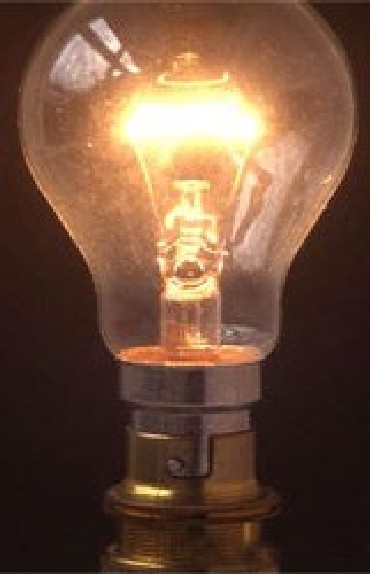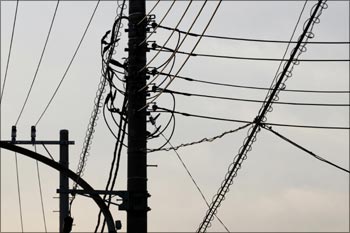 | « Back to article | Print this article |
Power deficit for 2011-12 pegged at 10.3 per cent
The Central Electricity Authority (CEA) has projected an energy shortfall of 10.3 per cent and a peak shortage of 12.9 per cent in the country during the current financial year (2011-12).
In the previous financial year, energy shortage was 8.5 per cent and peak shortfall 9.8 per cent.
The peaking shortage in the current financial year would prevail in all the regions, varying from 5.9 per cent in the north-eastern (N-E) region to 14.5 per cent in the south.
The projected energy shortage in N-E will be 7.7 per cent, compared to 11 per cent in the western region.
Click NEXT to read more...
Power deficit for 2011-12 pegged at 10.3 per cent
Himachal Pradesh, Jammu and Kashmir and Uttarakhand enjoy surplus energy during monsoon when generation from hydel projects is maximum.
But they would face severe shortage during winter when generation from these projects falls to the minimum.
The constituent states and Union Territories (UTs) of Delhi, Himachal Pradesh, Dadra & Nagar Haveli and Sikkim would have both peaking and energy surplus on an annual basis.
Chhattisgarh, Karnataka, Puducherry, Mizoram and Tripura would have surplus energy, whereas Orissa would be in a comfortable position in terms of peak shortage.
All other states would have varying shortages, both in energy and peaking.
Click NEXT to read more...
Power deficit for 2011-12 pegged at 10.3 per cent
CEA, in its Load Generation Balance Report for 2011-12, says 22 states and UTs would have energy as well as peak deficit of varying degrees and three states/UTs would have net surplus energy as well as peak on an annual basis.
"Projections of peak demand and energy requirement in the states are done on the basis of the trend analysis considering the actual data for the preceding years as per established methodology. The energy availability is worked out on the basis of generation targets set by the CEA's Operations Performance Monitoring Division after detailed consultations with the generating companies and state electricity board (SEBs) and approved by the power ministry," a power ministry official said.
The official informed that the estimated peak availability was calculated from the units available for generation for various utilities in different months.
Click NEXT to read more...
Power deficit for 2011-12 pegged at 10.3 per cent
According to the official, CEA carried out the assessment of gross energy generation in the country during 2011-12, taking into consideration the past operation performance of the thermal plants, their maintenance schedule of the generating units, partial and forced outages and availability of fuel.
CEA has estimated a capacity addition of 17,191 Mw during 2011-12, comprising 14,111 Mw of thermal, 2,080 Mw of hydro and 1,000 Mw of nuclear power stations.
The gross energy generation in the country has been assessed at 855 billion units from the power plants in operation and those expected to be commissioned during the year in consultation with generating companies and SEBs.
Click NEXT to read more...
Power deficit for 2011-12 pegged at 10.3 per cent
During 2010-11, though the total ex-bus energy availability increased by 5.6 per cent over the previous year and the peak met increased by six per cent, the shortage conditions prevailed in the country both in terms of energy and peaking availability.
The energy requirement registered 3.7 per cent growth during the year against a projected growth rate of 5.6 per cent, while peak demand posted 2.6 per cent growth, against the projected 6.5 per cent growth.
The energy shortage varied from 4.3 per cent in the eastern region to 13.3 per cent in the western region.





